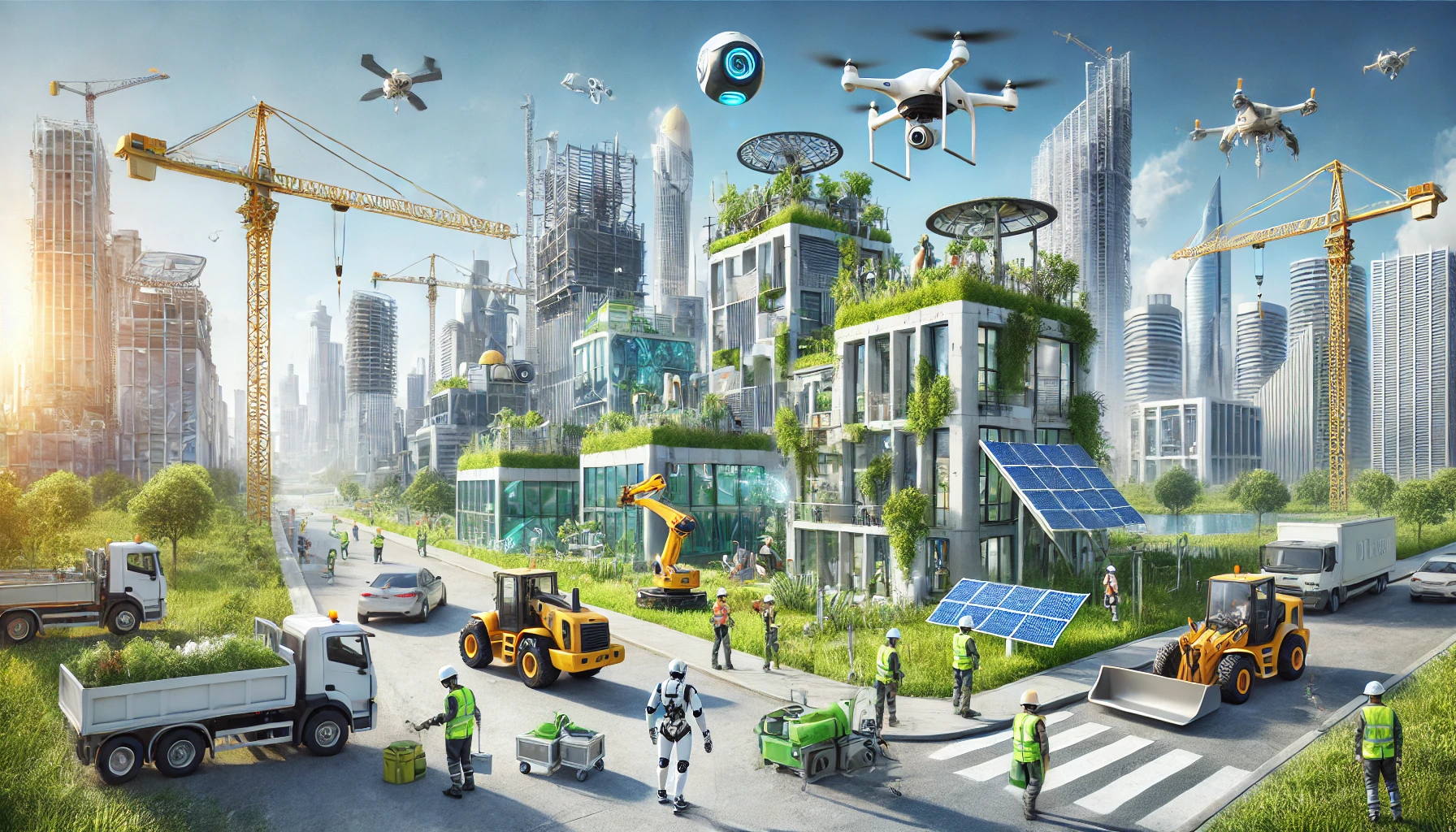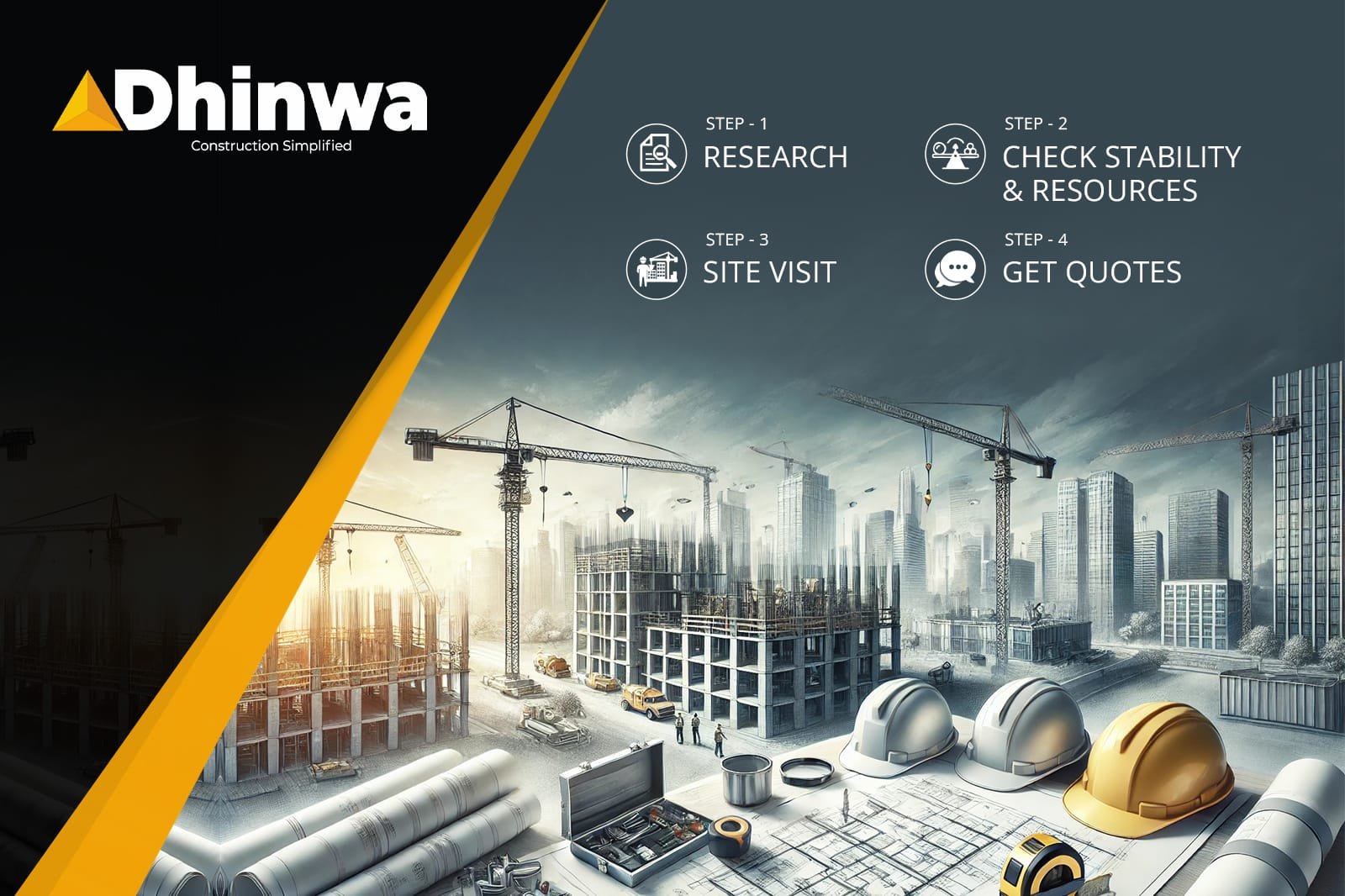High-Rise Building Elevation: Tips and Techniques for Design and Construction

Table of Contents
High-rise buildings are towering structures that have become an integral part of modern urban landscapes. These buildings are known for their impressive height, and they have become a symbol of architectural innovation and engineering excellence. High-rise buildings are typically defined as buildings that are taller than 75 feet or 23 meters, and they can be found in cities all over the world.
One of the most important aspects of high-rise building design is elevation. The elevation of a building refers to its exterior appearance, including the shape, size, and style of its facade. High-rise building elevation is an essential component of the building’s overall design, as it can have a significant impact on its functionality, energy efficiency, and aesthetic appeal. Architects and engineers must carefully consider the elevation of a high-rise building to ensure that it meets the needs of its occupants and the surrounding environment.
Understanding High-Rise Building Elevation
1. Definition and Significance
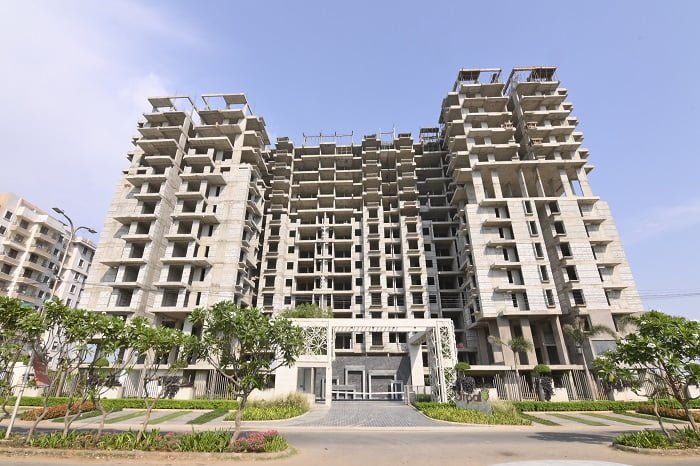
Image: Flats we have constructed in Jaipur at project site ‘Utpal’
High-rise building elevation refers to the exterior view of a building from a specific angle. It is an important aspect of architectural design as it showcases the building’s unique features and aesthetic appeal. The elevation of a high-rise building includes the shape, size, and position of windows, doors, balconies, and other exterior features.
The significance of high-rise building elevation lies in its ability to attract potential buyers or tenants. A well-designed elevation can enhance the building’s market value and appeal to a wider audience. It can also contribute to the overall image of the surrounding area and city skyline.
2. Historical Evolution

The concept of high-rise buildings dates back to ancient civilizations, where tall structures were built for religious and political purposes. However, it was not until the late 19th century that high-rise buildings became popular in urban areas due to advancements in construction technology.
One of the earliest examples of a high-rise building is the Home Insurance Building in Chicago, built in 1885. It was one of the first buildings to use a steel frame structure, allowing for greater height and stability. The building’s elevation featured a series of distinct horizontal bands, creating a visually appealing and modern design.
Over the years, high-rise building elevations have evolved to incorporate various styles and materials. Modern high-rise buildings often feature sleek and minimalist designs, with large windows and unique shapes. The use of sustainable materials and energy-efficient technologies has also become a prominent feature in high-rise building elevations.
In conclusion, high-rise building elevation is an essential aspect of architectural design, contributing to the building’s aesthetic appeal and market value. Its evolution over time reflects advancements in construction technology and changing design preferences.
Design Principles of High-Rise Building Elevation
1. Aesthetic Considerations
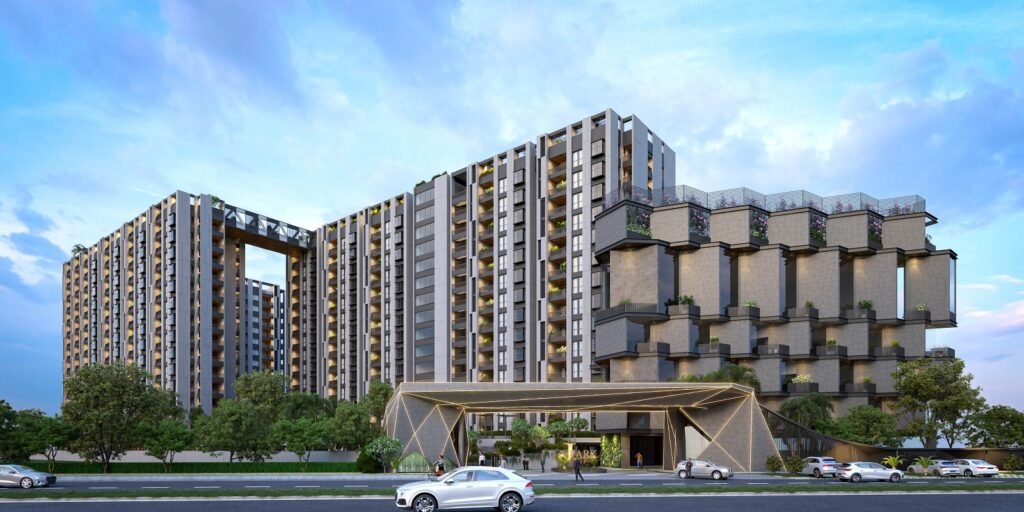
The design of a high rise building’s elevation is a crucial aspect that affects its overall appearance. Architects must consider various aesthetic factors such as the building’s form, color, texture, and proportion to create a visually appealing structure. The building’s elevation should also complement the surrounding environment and the city skyline. The use of high-quality materials and finishes can enhance the building’s aesthetic appeal and create a lasting impression on the viewers.
2. Functional Requirements

Apart from the aesthetic considerations, the design of a high rise building’s elevation should also meet its functional requirements. The building’s elevation should provide adequate natural light and ventilation to the occupants. The placement of windows and openings should be carefully considered to ensure maximum daylight penetration and minimum heat gain. The elevation should also provide easy access to emergency exits and fire escape routes.
3. Sustainability Factors
Sustainability is an essential aspect of high-rise building design. Architects must incorporate sustainable design principles in the building’s elevation to reduce its environmental impact. The use of energy-efficient materials and systems can significantly reduce the building’s energy consumption and carbon footprint. The elevation can also include green spaces such as vertical gardens and green roofs to improve the building’s air quality and reduce the urban heat island effect.
In conclusion, the design of a high-rise building’s elevation should consider various aesthetic, functional, and sustainability factors. Architects must strike a balance between these factors to create a visually appealing, functional, and sustainable structure.
Modern High Rise Elevations
1. Contemporary Styles and Materials
Modern high-rise building elevations have come a long way in terms of design and materials used. Contemporary styles and materials have been introduced to create unique and visually appealing elevations. Architects are now using materials such as glass, steel, and concrete to create sleek and modern designs. These materials not only enhance the aesthetics of high rise buildings but also provide strength and durability.
One popular modern style is the curtain wall system, which is made up of glass and metal frames. This system allows for large windows and natural light to enter the building, while also providing insulation and energy efficiency. Another popular style is the use of asymmetrical shapes and angles, which create a dynamic and unique look.
2. Technological Advancements

Advancements in technology have also played a significant role in modern high-rise building elevations. Computer-aided design (CAD) software has allowed architects to create intricate designs with precision and accuracy. Building Information Modeling (BIM) software has also become popular, as it allows for collaboration between architects, engineers, and contractors.
In addition to software, technological advancements in materials have also contributed to modern high rise building elevations. For example, the use of lightweight and high-strength materials such as carbon fiber and composites have allowed for the creation of taller and more complex structures.
Overall, modern high-rise building elevations have evolved to incorporate contemporary styles, materials, and technology. Architects are now able to create visually stunning and functional designs that push the boundaries of traditional high-rise buildings.
Case Studies
1. Iconic High-Rise Buildings

High-rise buildings have become an integral part of modern architecture, and many of them have become icons of their respective cities. These buildings have unique designs that set them apart from others, and they have become tourist attractions in their own right.
One such building is Taipei 101 in Taiwan. It stands at a height of 508 meters, with 101 floors above ground and 5 floors underground. It was designed to withstand typhoons and earthquakes, which are common in the area. The building has a unique design, with eight sections that taper towards the top and are separated by outdoor gardens. It has become a symbol of Taiwan’s economic success and technological advancement.
Another iconic high-rise building is the Burj Khalifa in Dubai. It stands at a height of 828 meters, with 163 floors. It was designed to be the centerpiece of a new development called Downtown Dubai, which includes residential, commercial, and hotel properties. The building has a unique Y-shaped design, with setbacks at various levels that create outdoor terraces. It has become a symbol of Dubai’s ambition and modernity.
2. Innovative Elevation Designs
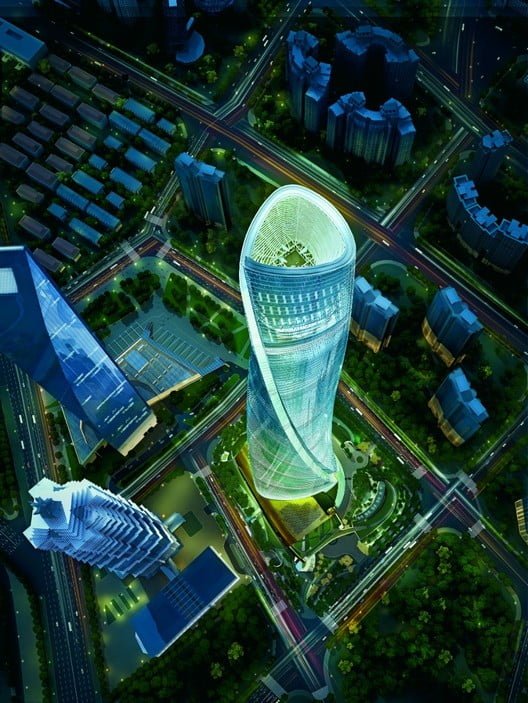
High-rise buildings are not just about height, but also about innovative elevation designs. Architects and engineers are constantly pushing the boundaries of what is possible, and coming up with new ways to create visually stunning and functional buildings.
One such building is the Shanghai Tower in China. It stands at a height of 632 meters, with 128 floors. It has a unique twisted design, which helps to reduce wind loads and improve structural stability. The building also has a double-skin facade, which helps to reduce energy consumption by providing insulation and natural ventilation.
Another innovative high-rise building is the Aqua Tower in Chicago. It stands at a height of 262 meters, with 82 floors. It has a unique undulating design, which gives it the appearance of water flowing down the facade. The building also has balconies that protrude from the facade, which provide outdoor spaces for residents and help to reduce solar heat gain.
These case studies demonstrate the diversity and innovation that can be found in high-rise building design. They show that high-rise buildings are not just functional structures, but also works of art that can inspire and awe.
Challenges and Solutions
1. Structural Challenges
Constructing high-rise buildings is a complex process that involves overcoming several structural challenges. One of the most significant challenges is ensuring the stability and safety of the building. High-rise buildings are subjected to a variety of loads, including vertical gravity loads from the building’s weight and lateral loads from wind and seismic forces. These loads can cause significant stress on the building’s structure, which can lead to structural failures if not addressed appropriately.
To overcome these challenges, engineers and architects use innovative structural design techniques that ensure the building’s stability and safety. For instance, they use high-strength materials and advanced formwork techniques to achieve the required speed and quality of construction. Additionally, they incorporate seismic-resistant features such as base isolation systems and damping devices to protect the building from seismic forces.
2. Environmental Impact
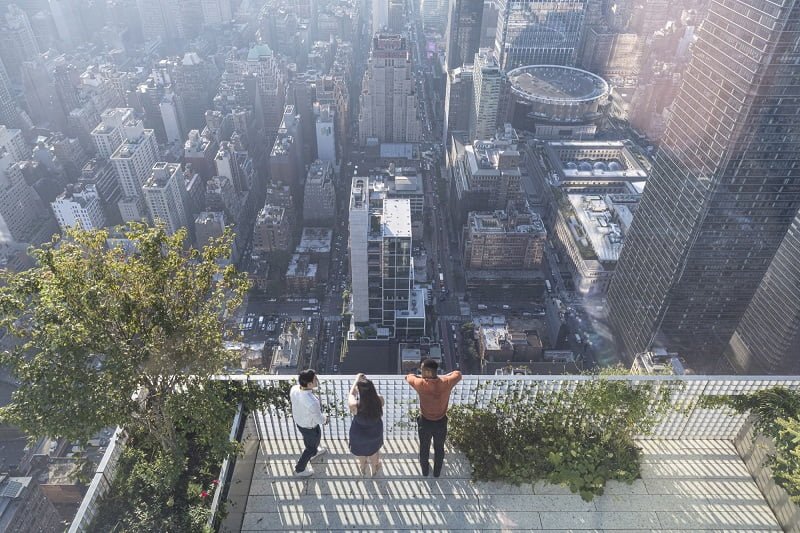
High-rise buildings have a significant impact on the environment, including energy consumption, greenhouse gas emissions, and waste generation. The construction and operation of high-rise buildings require a considerable amount of energy, which contributes to climate change. Additionally, they generate a significant amount of waste, including construction waste and solid waste.
To mitigate the environmental impact of high-rise buildings, architects and engineers use sustainable design practices that minimize energy consumption and waste generation. For instance, they incorporate energy-efficient features such as green roofs, solar panels, and energy-efficient lighting systems. They also use recycled materials and adopt waste management practices that reduce waste generation and promote recycling.
3. Urban Context and Integration

High-rise buildings play an essential role in urban development, but they also pose significant challenges in terms of integration and context. Integrating high-rise buildings into the urban fabric requires careful consideration of factors such as the building’s scale, design, and location. Additionally, high-rise buildings can have a significant impact on the surrounding environment, including traffic congestion, noise pollution, and visual impact.
To address these challenges, architects and urban planners use innovative design strategies that ensure the building’s integration and context within the urban fabric. For instance, they use design features such as setbacks, green spaces, and public amenities to enhance the building’s integration with the surrounding environment. Additionally, they adopt traffic management strategies that reduce congestion and promote sustainable transportation modes.
Future Trends in High-Rise Building Elevations
1. Predicting Future Aesthetics
As high-rise buildings continue to dominate urban skylines, architects and designers are constantly exploring new ways to create visually stunning structures. In the future, we can expect to see a shift towards more sustainable and eco-friendly designs, with the use of green walls, rooftop gardens, and solar panels becoming increasingly popular.
Furthermore, there is a growing trend towards creating buildings that blend seamlessly into their surroundings, with designs that incorporate natural elements such as wood, stone, and glass. The use of geometric shapes and patterns is also expected to become more prevalent, with buildings featuring intricate facades that play with light and shadow.
2. Emerging Technologies
Advancements in technology are also set to shape the future of high-rise building elevations. One of the most exciting developments is the use of 3D printing, which has the potential to revolutionize the construction industry by allowing architects to create complex structures with greater precision and efficiency.
Another emerging technology is the use of smart materials, which have the ability to change their properties in response to external stimuli such as temperature, light, and humidity. This opens up new possibilities for creating dynamic and interactive facades that respond to their environment in real time.
In addition, the use of virtual and augmented reality is expected to become more widespread in the design and construction of high-rise buildings, allowing architects and clients to experience and interact with virtual models of their projects before they are built.
Overall, the future of high-rise building elevations looks to be an exciting and innovative one, with a focus on sustainability, natural elements, and emerging technologies.
Frequently Asked Questions
1. What are the latest trends in high-rise facade design?
The latest trends in high-rise facade design include the use of sustainable materials, such as green walls and solar panels, to enhance the building’s sustainability. Other popular trends include the use of glass and steel to create a sleek and modern look, as well as the incorporation of unique shapes and patterns into the design.
2. How do high-rise building elevations differ in residential versus commercial structures?
High-rise building elevations differ in residential versus commercial structures in terms of their function and design. Residential buildings typically have more private balconies and outdoor spaces, while commercial buildings may have larger windows and more open spaces to showcase products or services.
3. What are the common materials used in high-rise building facades?
Common materials used in high-rise building facades include glass, steel, concrete, and stone. These materials are chosen for their durability, strength, and aesthetic appeal.
4. What are the key factors to consider when designing the elevation of a high-rise building?
The key factors to consider when designing the elevation of a high-rise building include the building’s purpose, location, and surrounding environment. Other important factors to consider include the building’s structural integrity, energy efficiency, and overall aesthetic appeal.
5. How does the elevation design impact the sustainability of a high-rise building?
The elevation design can have a significant impact on the sustainability of a high-rise building. By incorporating sustainable materials and design elements, such as green walls and solar panels, the building can reduce its energy consumption and carbon footprint.
6. What are some challenges architects face when creating high-rise building elevations?
Some challenges architects face when creating high-rise building elevations include balancing functionality with aesthetics, ensuring structural integrity and safety, and meeting building codes and regulations. Additionally, architects must consider the surrounding environment and community when designing the building’s facade.



